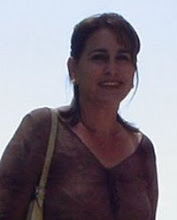
Political analyst and host of the show Cayendo y Corriendo (Falling and Running), broadcast by Venezolana de Television (VTV), Miguel Angel Perez Pirela, held on Sunday March 31, 2013, a personal meeting for over four hours, with the Commander in Chief Fidel Castro Ruz.

The meeting allowed the journalist and the Cuban leader exchange on contemporary history and various current national issues.

"Healthy, lucid, intelligent, analyzing countless numbers and measures, names and situations that leave anyone speechless," were the first words of Pirela, referring to the visit he made to Castro in Havana. He showed photographs and thanked the gesture of the Cuban leader, by sending the pictures and allow publishing.
Pirela said he participated in a tour of observation by the Cuban countryside where agriculture experiments are made, and said that the results "will surprise more than one."
"Those who are willing and predicting the death of our Comandante Castro and those who every day think on it, are these pictures," said the presenter of VTV about the images, which, he said, make happy the Venezuelan people that admire and respect him.
"Without a doubt, Fidel is one of the most intelligent human beings who has given birth Latin America and humanity," said Perez Pirela, after the analysis made by Fidel on Venezuela, Latin America and the world, at a time when Venezuelans are still in pain and sadness for Chavez's death. /
With information from Cubadebate
 Over 200 delegates from 21 countries have bought tickets to attend the 20th Romerias de Mayo to take place in the city of Holguin from 2 to 8 next month. It is expected this figure will rise in the coming hours, so it promises to record worldwide participation. 200 young artists from all provinces of Cuba will be also participating in the event.
So far, the World Meeting of Poets and Chile, Mexico, Venezuela and Spain have the largest delegations to this important cultural event.
What are the Romerias?
According to the Spanish custom of placing a cross in the highest places near populations in order to prevent epidemics or natural disasters, the Franciscan friar Antonio de Alegría placed, in the colonial era of the island, a cross in a hill that marks Holguin's geographic north (known as Loma de la Cruz). Long after this religious event turned into a festival that includes all artistic expressions, which starts with a pilgrimage to the cross placed by Friar Antonio de Alegría.
Over 200 delegates from 21 countries have bought tickets to attend the 20th Romerias de Mayo to take place in the city of Holguin from 2 to 8 next month. It is expected this figure will rise in the coming hours, so it promises to record worldwide participation. 200 young artists from all provinces of Cuba will be also participating in the event.
So far, the World Meeting of Poets and Chile, Mexico, Venezuela and Spain have the largest delegations to this important cultural event.
What are the Romerias?
According to the Spanish custom of placing a cross in the highest places near populations in order to prevent epidemics or natural disasters, the Franciscan friar Antonio de Alegría placed, in the colonial era of the island, a cross in a hill that marks Holguin's geographic north (known as Loma de la Cruz). Long after this religious event turned into a festival that includes all artistic expressions, which starts with a pilgrimage to the cross placed by Friar Antonio de Alegría.
 During the Romerias the people started a procession from the San Isidoro Church to La Loma de La Cruz where they officiated a Mass and at the same place they started the festivities that lasted until the next day. After this, the Catholic holiday became known until becoming a popular festival.
Today, and since 1994, The Romerias de Mayo have reemerged by the wish of young people from the Saiz Brothers Association, to link the new with the old, and realize its slogan "Because there is not today without yesterday."
During the Romerias the people started a procession from the San Isidoro Church to La Loma de La Cruz where they officiated a Mass and at the same place they started the festivities that lasted until the next day. After this, the Catholic holiday became known until becoming a popular festival.
Today, and since 1994, The Romerias de Mayo have reemerged by the wish of young people from the Saiz Brothers Association, to link the new with the old, and realize its slogan "Because there is not today without yesterday."





